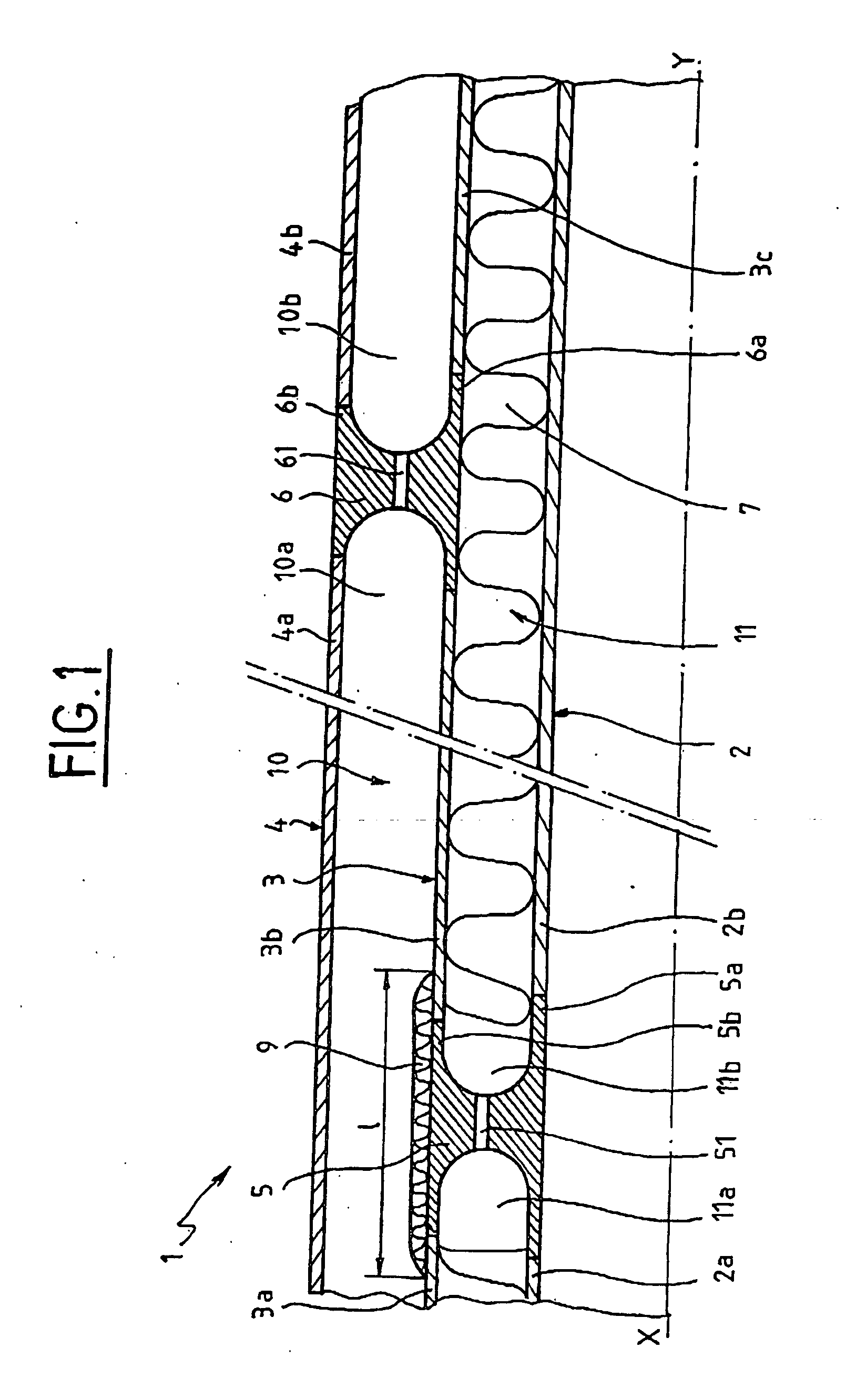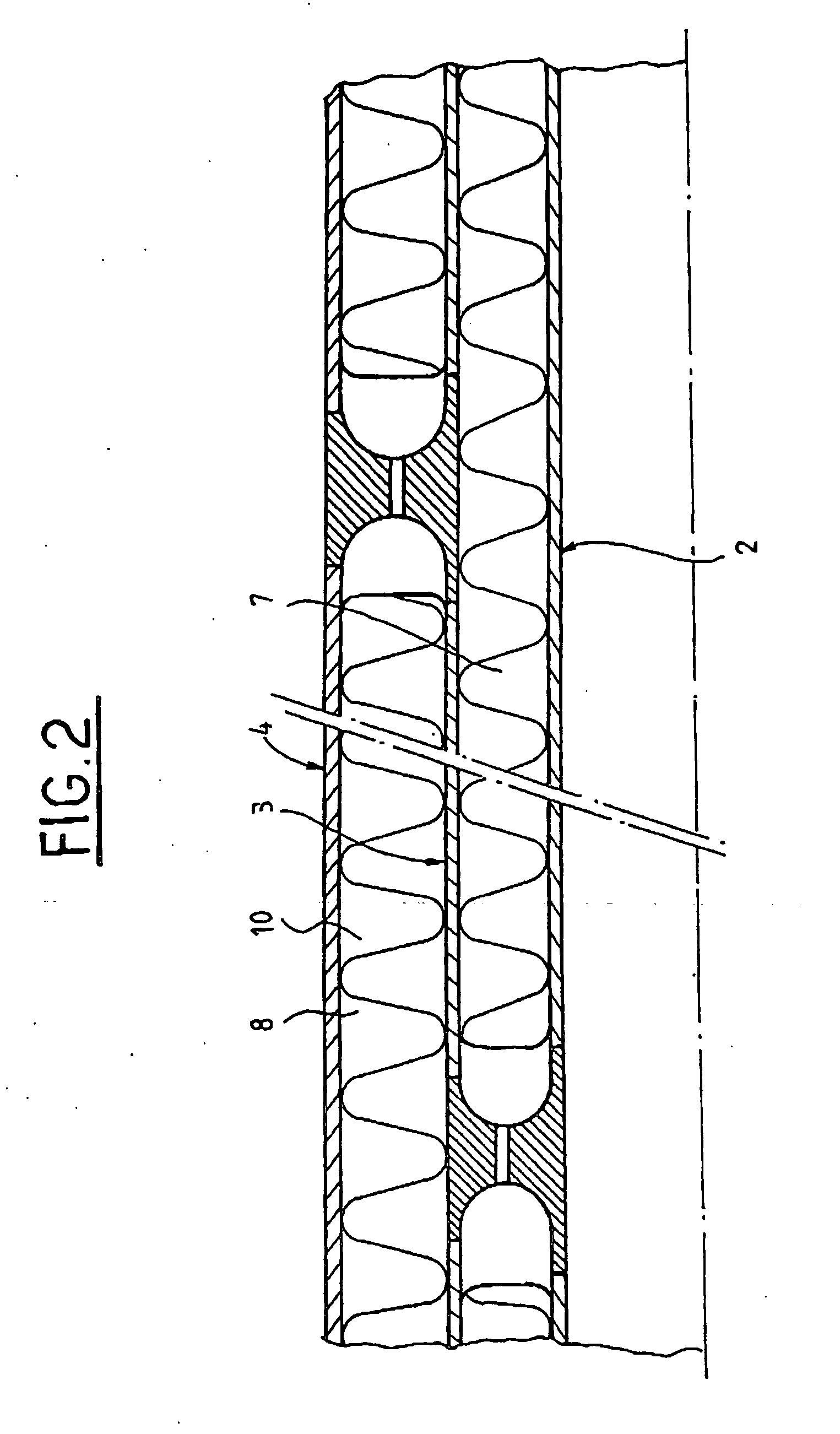Pipeline for the transportation of liquefied natural gas
- Summary
- Abstract
- Description
- Claims
- Application Information
AI Technical Summary
Benefits of technology
Problems solved by technology
Method used
Image
Examples
Embodiment Construction
[0031] Generally speaking, the pipelines in question are used to carry a cryogenic liquid from one point to another, for example to fill or empty a ship of liquefied gas when it is far from the liquefaction plant. The pipelines are thus immersed in the sea and must rise vertically by means of a bend. The variations in length of the part of the pipeline immersed in the sea or on supports leads to variations in the position of the vertical upright part of the pipeline. These variations cause stresses in the vertical part which must be controlled. The same stresses must be controlled when the pipeline is under ground or in area.
[0032]FIG. 1 partially shows a pipeline 1, sectioned along the longitudinal axis XY, intended for the transportation of a cryogenic liquid formed of three pipes: an inner pipe 2 inside which the cryogenic fluid circulates, a middle pipe 3 and an outer pipe 4. Each of these pipes is formed of sections 2a and 2b; 3a, 3b and 3c; 4a and 4b which are welded end to e...
PUM
 Login to View More
Login to View More Abstract
Description
Claims
Application Information
 Login to View More
Login to View More - R&D
- Intellectual Property
- Life Sciences
- Materials
- Tech Scout
- Unparalleled Data Quality
- Higher Quality Content
- 60% Fewer Hallucinations
Browse by: Latest US Patents, China's latest patents, Technical Efficacy Thesaurus, Application Domain, Technology Topic, Popular Technical Reports.
© 2025 PatSnap. All rights reserved.Legal|Privacy policy|Modern Slavery Act Transparency Statement|Sitemap|About US| Contact US: help@patsnap.com



